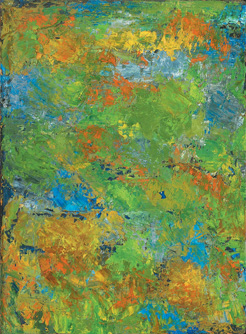
Alexander Bing, Untitled, 1954
Creativity's multimedia forms change at a dizzying pace. Computer programs—tools for shaping metafora—are released at an ever-increasing speed. Digital files are mutable and mutating. In order to be able to work effectively today, creative individuals must have a grasp of the underlying principles that give meaning to the creative act— its elements of structure. Perspective is (sometimes literally) the artist's point of view, as well as the way in which audiences orient themselves to the work. It is through narrative that events in an artistic work unfold, and space and time are the environments in which they unfold.
Roman Jakobson (Russian Formalist critic and linguist, 1896-1982) stated that all communication is conveyed from one person (an addresser) to another (an addressee) based on a shared context and code. The elements described in this chapter shape that context and code. Language is a set of arbitrary sounds that we agree to have certain meanings, while our appreciation of a photograph depends our having had a common experience of the object depicted. Some elements are innate, others are acquired.
Humanity's need to express is not merely an accounting of information, fact or figure: those acts are simply translation. Creativity, on the other hand, is an embellishment in our quest to comprehend the unknown and unknowable, and in so doing to create new vehicles of understanding. As we sharpen our skills to manage metafora, adapting existing rules to new situations, we extend the abilities of our senses. The role for creative people in any field is to constantly challenge existing structures, re-arranging their elements in new configurations.
